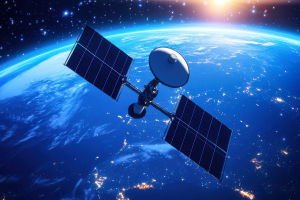Our planet Earth is a rare gem in the vast universe, and it is the only known place where life exists.
As we embark on this journey through the wonders of Earth, we’ll explore what makes it so special—its atmosphere, oceans, ecosystems, and more. From its rich history to the pressing challenges of today, this is the story of our incredible home.
The Structure of Earth
Earth is made up of layers that each play a vital role in sustaining life. The outer layer is the solid crust, beneath which lies the semi-solid mantle and the molten outer core. Deep at the center is the solid inner core. Earth's surface is 71% covered by water, including oceans, lakes, and rivers. The remaining landforms are continents and islands, which continue to shift over time, reshaping the planet.
Atmosphere: Earth’s Protective Layer
The atmosphere, composed mainly of nitrogen and oxygen, forms a protective shield around Earth. It regulates the planet’s temperature, filters harmful radiation from the sun, and supports life by providing oxygen. Without this layer, Earth would be inhospitable, and the delicate balance of life would be impossible to maintain.
The Oceans: Life's Heartbeat
The oceans are vital for life on Earth, covering over 70% of the planet’s surface. They act as the Earth's climate regulator and support a vast array of life forms. From the deep ocean trenches to the coral reefs, these bodies of water are essential for biodiversity and are a key part of Earth’s life-support system.
The Climate and Seasons of Earth
Thanks to Earth’s tilt on its axis, we experience the seasons, which vary dramatically across the planet. The tilt of Earth creates different weather patterns and climates, from the freezing winters of the poles to the hot, humid conditions at the equator. This diversity allows a wide range of ecosystems to thrive.
The History of Life on Earth
Earth’s history spans over 4.5 billion years, and life began in its oceans more than 3.5 billion years ago. Over time, organisms evolved, and today, Earth is home to millions of species. Despite numerous challenges, including mass extinctions and climate changes, life on Earth continues to evolve and adapt to new environments.
Human Impact and the Future
As humans, we have significantly impacted Earth. Our advancements in technology and resource extraction have transformed landscapes and ecosystems. However, these activities have also brought about environmental challenges, such as pollution and climate change. It's crucial that we take steps toward sustainability, ensuring that Earth remains a livable planet for future generations.
Protecting Our Only Home
Earth is the only home we have, and it is our responsibility to protect it. From its oceans and atmosphere to its diverse ecosystems, Earth is a precious and unique planet. As we face environmental challenges, we must work together to ensure a sustainable future, where life continues to thrive. Let’s take care of our planet, for there is no place like Earth.


